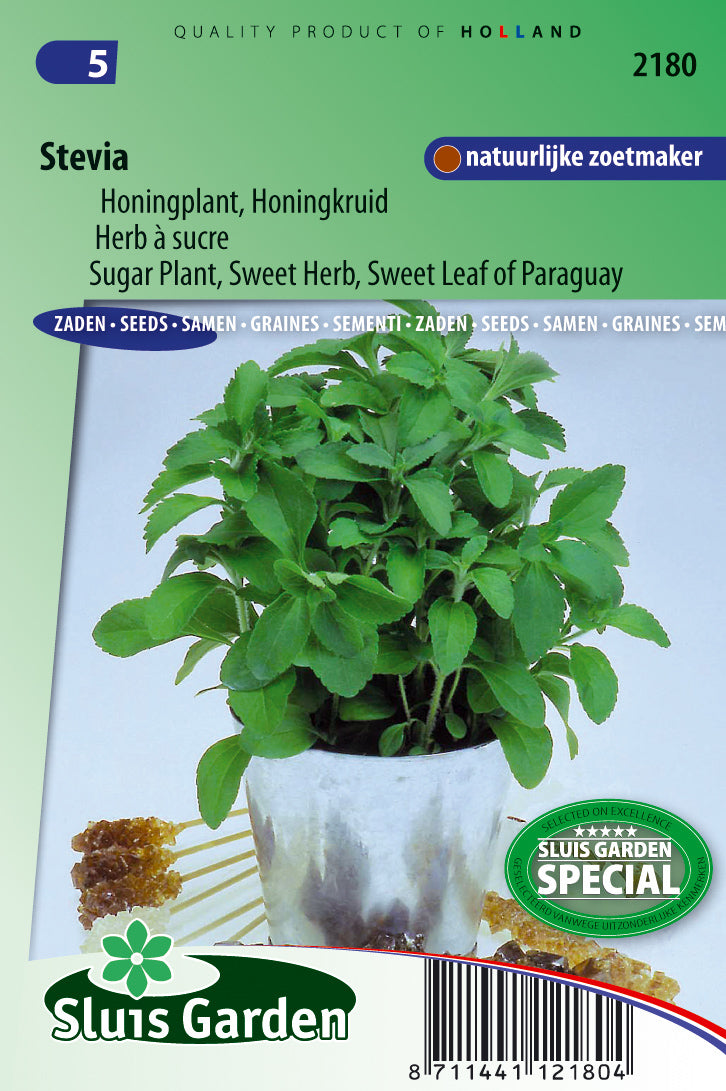1
/
of
1
Stevia Rebaudiana Sugar plant
Stevia Rebaudiana Sugar plant
Regular price
1.850 KWD
Regular price
Sale price
1.850 KWD
Unit price
/
per
Shipping calculated at checkout.
Couldn't load pickup availability
Growing Stevia (Stevia rebaudiana), also known as the sugar plant, can be a rewarding experience, especially if you're looking for a natural sweetener. Here's a guide on how to grow Stevia:
**1. Climate:**
- Stevia thrives in warm temperatures. It is best suited for USDA hardiness zones 9-11. However, you can also grow it as an annual in cooler climates.
**2. Soil:**
- Plant Stevia in well-draining, loamy soil with a slightly acidic to neutral pH (around 6.5 to 7.5). Good drainage is crucial to prevent waterlogging.
**3. Sunlight:**
- Stevia prefers full sunlight but can tolerate partial shade. Ensure it receives at least 6 hours of direct sunlight daily.
**4. Starting from Seeds:**
- Start Stevia seeds indoors 6-8 weeks before the last expected frost in your area. Transplant seedlings outdoors when the soil has warmed and there is no risk of frost.
**5. Planting:**
- Space Stevia plants about 18-24 inches apart in rows spaced 24-30 inches apart. Ensure proper spacing to allow good air circulation.
**6. Watering:**
- Stevia plants need regular watering to keep the soil consistently moist. Water deeply when the top inch of soil feels dry. Avoid waterlogged conditions.
**7. Fertilization:**
- Use a balanced, all-purpose fertilizer during planting and periodically throughout the growing season. Follow package instructions for application rates.
**8. Pruning:**
- Pinch back the tops of Stevia plants when they reach about 8 inches in height to encourage bushier growth. Regular pruning will result in a fuller plant.
**9. Harvesting:**
- Harvest Stevia leaves when the plants are in full bloom. You can cut the stems, leaving a few sets of leaves on each stem. Dry the leaves by hanging them in a shaded, well-ventilated area.
**10. Propagation:**
- Stevia can be propagated through stem cuttings. Take cuttings from healthy, established plants, dip them in rooting hormone, and plant them in a well-draining medium.
**11. Overwintering:**
- In cooler climates, Stevia plants may not survive winter outdoors. Consider growing Stevia as an annual or bringing potted plants indoors for the winter.
**12. Pests and Diseases:**
- Stevia is generally resistant to pests and diseases. However, watch out for aphids or whiteflies. Insecticidal soap can be used if pest problems arise.
**13. Usage:**
- Dry Stevia leaves can be ground into a powder and used as a natural sweetener in various culinary applications.
Growing Stevia at home allows you to enjoy a natural, calorie-free sweetener. Remember that the sweetness is concentrated in the leaves, so you can experiment with different amounts to achieve the desired sweetness in your recipes.
**1. Climate:**
- Stevia thrives in warm temperatures. It is best suited for USDA hardiness zones 9-11. However, you can also grow it as an annual in cooler climates.
**2. Soil:**
- Plant Stevia in well-draining, loamy soil with a slightly acidic to neutral pH (around 6.5 to 7.5). Good drainage is crucial to prevent waterlogging.
**3. Sunlight:**
- Stevia prefers full sunlight but can tolerate partial shade. Ensure it receives at least 6 hours of direct sunlight daily.
**4. Starting from Seeds:**
- Start Stevia seeds indoors 6-8 weeks before the last expected frost in your area. Transplant seedlings outdoors when the soil has warmed and there is no risk of frost.
**5. Planting:**
- Space Stevia plants about 18-24 inches apart in rows spaced 24-30 inches apart. Ensure proper spacing to allow good air circulation.
**6. Watering:**
- Stevia plants need regular watering to keep the soil consistently moist. Water deeply when the top inch of soil feels dry. Avoid waterlogged conditions.
**7. Fertilization:**
- Use a balanced, all-purpose fertilizer during planting and periodically throughout the growing season. Follow package instructions for application rates.
**8. Pruning:**
- Pinch back the tops of Stevia plants when they reach about 8 inches in height to encourage bushier growth. Regular pruning will result in a fuller plant.
**9. Harvesting:**
- Harvest Stevia leaves when the plants are in full bloom. You can cut the stems, leaving a few sets of leaves on each stem. Dry the leaves by hanging them in a shaded, well-ventilated area.
**10. Propagation:**
- Stevia can be propagated through stem cuttings. Take cuttings from healthy, established plants, dip them in rooting hormone, and plant them in a well-draining medium.
**11. Overwintering:**
- In cooler climates, Stevia plants may not survive winter outdoors. Consider growing Stevia as an annual or bringing potted plants indoors for the winter.
**12. Pests and Diseases:**
- Stevia is generally resistant to pests and diseases. However, watch out for aphids or whiteflies. Insecticidal soap can be used if pest problems arise.
**13. Usage:**
- Dry Stevia leaves can be ground into a powder and used as a natural sweetener in various culinary applications.
Growing Stevia at home allows you to enjoy a natural, calorie-free sweetener. Remember that the sweetness is concentrated in the leaves, so you can experiment with different amounts to achieve the desired sweetness in your recipes.
Share

